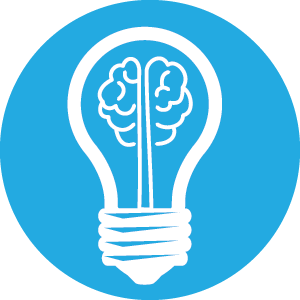Science of Learning
Browse more Science of Learning resources

This resource page offers strategies to increase students’ awareness and regulation of their own thinking to help them become better learners.
In today’s higher education landscape, fostering independent, reflective learners is more important than ever. One powerful way to support this goal is by integrating metacognitive strategies into your teaching practice. Metacognition - thinking about one’s own thinking - helps students become aware of how they learn, monitor their progress, and adjust their strategies for success. Fostering metacognitive skills and knowledge among students not only enhances academic performance but also cultivates critical thinking and reflective practices.
Metacognition is broadly understood as encompassing two components: knowledge about cognition and regulation of cognition. Both are described below.
This refers to what learners know about their own cognition. It includes:
This refers to the ability to manage one’s learning processes in real time. It includes:
Instructors can integrate metacognition into their teaching by reviewing their courses and finding opportunities to discuss metacognitive knowledge and skills with the students. For example, you could ask students at the beginning of the semester how they typically prepare for classes, or in mid-semester, if the way they are studying for the course is working for them or needs improvement. Or you could have students submit exit slips to reflect on how they would use what they learned in class.
Additionally, below are three empirically supported strategies that instructors can implement to promote metacognitive development in their courses.
The integration of metacognitive strategies into college teaching offers a robust framework for enhancing student learning and academic success. This article provides three concrete strategies for college instructors: metacognitive prompts, wrappers, and think-aloud protocols. Additionally, the framework of metacognitive regulation and knowledge might help you formulate additional strategies you can use to cultivate reflective, self-directed learners.
Halmo, S. M., Bremers, E. K., Fuller, S., & Stanton, J. D. (2022). “Oh, that makes sense”: Social Metacognition in Small-Group Problem Solving. CBE—Life Sciences Education, 21(3), ar58. https://doi.org/10.1187/cbe.22-01-0009
Hodges, L. C., Beall, L. C., Anderson, E. C., Carpenter, T. S., Cui, L., Feeser, E., Gierasch, T., Nanes, K. M., Perks, H. M., & Wagner, C. (2020). Effect of Exam Wrappers on Student Achievement in Multiple, Large STEM Courses. Journal of College Science Teaching, 50(1), 69–79. https://doi.org/10.1080/0047231X.2020.12290677
Stanton, J. D., Sebesta, A. J., & Dunlosky, J. (2021). Fostering Metacognition to Support Student Learning and Performance. CBE—Life Sciences Education, 20(2), fe3. https://doi.org/10.1187/cbe.20-12-0289
Tanner, K. D. (2012). Promoting Student Metacognition. CBE—Life Sciences Education, 11(2), 113–120. https://doi.org/10.1187/cbe.12-03-0033
Watson, D., & Gentry, J. (2024). Think Aloud Videos and Assessment in an Introductory Economics Class for Undergraduate Students. InSight: A Journal of Scholarly Teaching, 20. https://doi.org/10.46504/20202402wa
Columbia University Center for Teaching and Learning - Metacognition
MIT Teaching + Learning Lab - Metacognition
Yale University Poorvu Center for Teaching and Learning - Metacognition
Written by Mayuko Nakamura, Assistant Director for Assessment and Equitable Pedagogy, Center for Integrated Professional Development. Last updated 10/16/2025